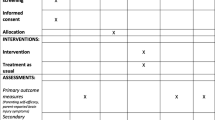Abstract
A care network has been created in the Paris area according to two criteria – the continuity and the specificity of the care, with a single place to manage pediatric neurosurgical emergencies. This network makes possible research about brain-injured children. Until recently, the ”Kennard principle”, that is, the assumption that recovery after similar lesions is greater in children than in adults has been supposed to be always true. In fact, if the lesions are diffuse, recovery is not greater in children compared with adults, or in younger children compared with older ones: the prognosis depends on the remaining ability to learn new practices. Normal IQ does not mean absence of sequelae. The cognitive deficits are very similar to those found in adults at the acute phase. For instance, visuo-spatial neglect appears as rather frequent when systematically looked for. The final assessment of outcome after childhood traumatic brain-injury should be done only after several years.
Similar content being viewed by others
Author information
Authors and Affiliations
Additional information
Received: 3 January 2000
Rights and permissions
About this article
Cite this article
Laurent-Vannier, A., Brugel, D. & De Agostini, M. Rehabilitation of brain-injured children. Child's Nerv Syst 16, 760–764 (2000). https://doi.org/10.1007/s003810000349
Issue Date:
DOI: https://doi.org/10.1007/s003810000349




